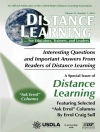‘ Maximum Likelihood Estimation . . . provides a useful introduction. . . it is clear and easy to follow with applications and graphs. . . . I consider this a very useful book. . . . well-written, with a wealth of explanation. . .’
–Dougal Hutchison in Educational Research
Eliason reveals to the reader the underlying logic and practice of maximum likelihood (ML) estimation by providing a general modeling framework that utilizes the tools of ML methods. This framework offers readers a flexible modeling strategy since it accommodates cases from the simplest linear models (such as the normal error regression model) to the most complex nonlinear models that link a system of endogenous and exogenous variables with non-normal distributions. Using examples to illustrate the techniques of finding ML estimators and estimates, Eliason discusses what properties are desirable in an estimator, basic techniques for finding maximum likelihood solutions, the general form of the covariance matrix for ML estimates, the sampling distribution of ML estimators; the use of ML in the normal as well as other distributions, and some useful illustrations of likelihoods.
表中的内容
Introduction
The Logic of Maximum Likelihood
A General Modeling Framework Using Maximum Likelihood Methods
An Introduction to Basic Estimation Techniques
Further Empirical Examples
Additional Likelihoods
Conclusions
关于作者
RESEARCH AND TEACHING INTERESTSQuantitative Methodology and Statistics; Sociology of Work, Occupations, and Labor Markets;Economic Sociology; Stratification; Life Course












